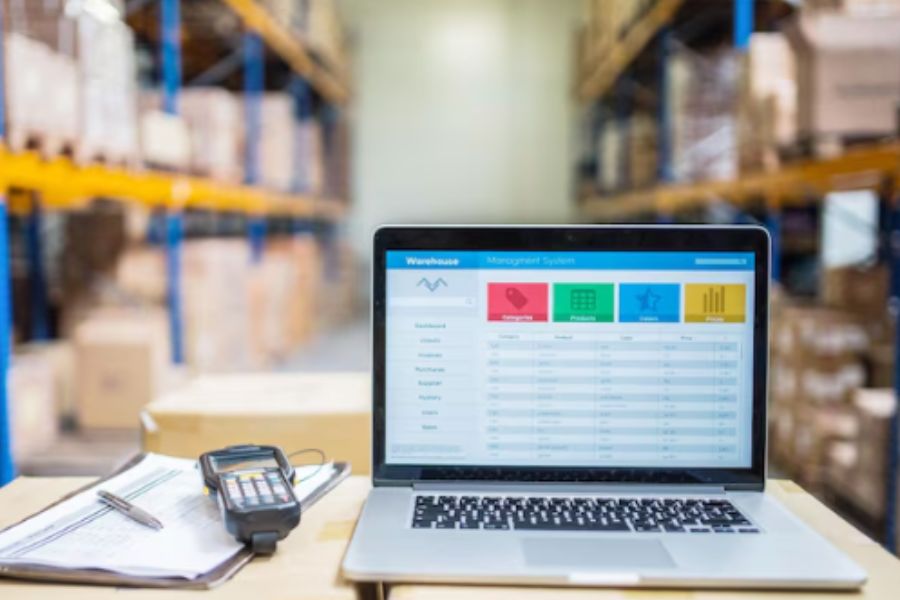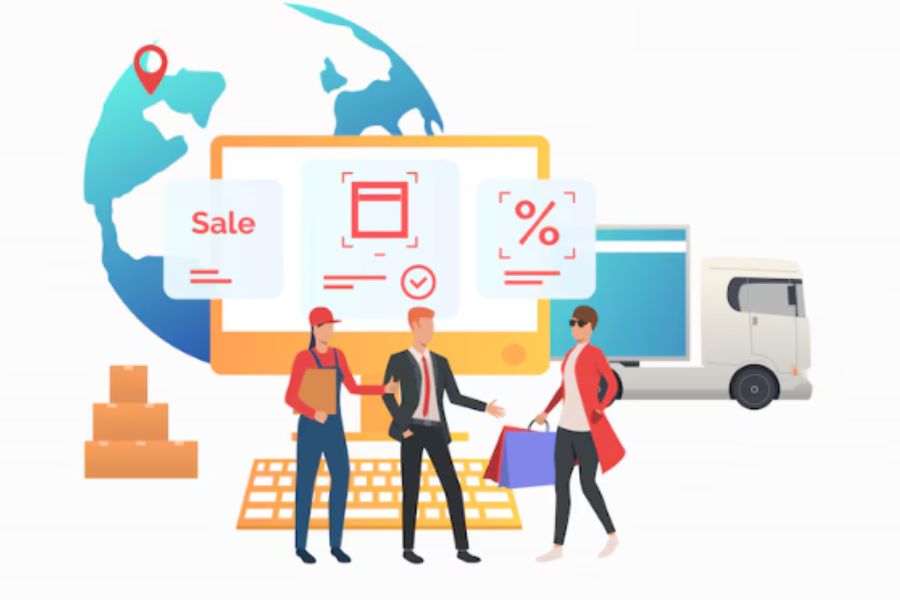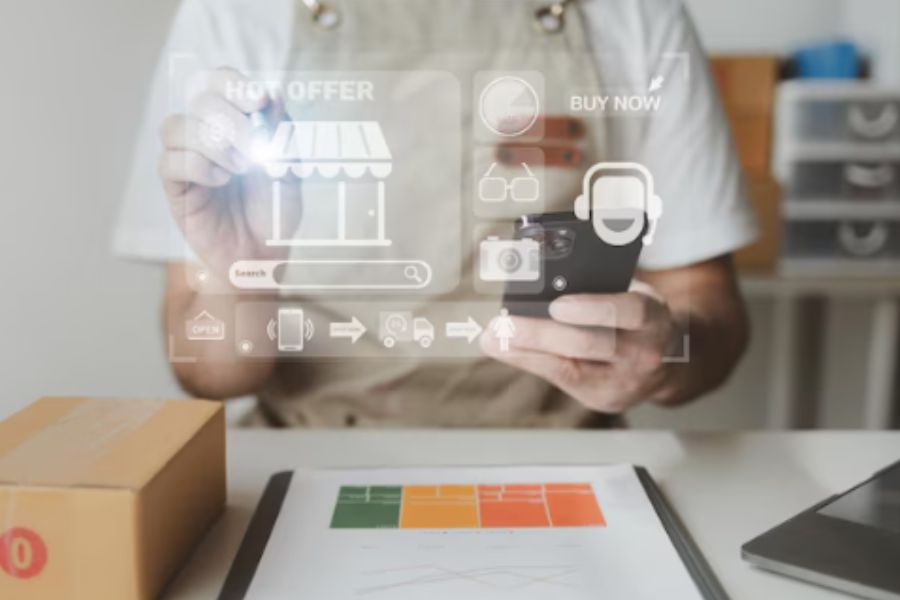Ever wondered how top-tier businesses manage to retain their most valuable customers? The secret lies in their adept utilization of clienteling software. But what exactly is clienteling software, and how does it contribute to customer retention? Join us as we explore the intricacies of this innovative technology and uncover its transformative impact on retaining key customers.
What is A Clienteling Software? How Does It Work?
Clienteling software refers to a specialized type of software used in the retail industry to enhance customer experience and build stronger relationships between retail associates and their clients.
It leverages technology to empower retail associates with tools and data to provide personalized service to individual customers, ultimately leading to increased sales and customer loyalty.
Here’s how it typically works:
- Customer data collection: Retailers collect customer data through various channels, such as in-store purchases, online transactions, loyalty programs, and social media interactions. This data includes purchase history, preferences, contact information, and communication preferences.
- Centralized database: The customer data collected is stored in a centralized database or CRM system. This enables retail associates to access comprehensive information about each customer, irrespective of the channel used to interact with the brand.
- Customer profiling: Retailers develop customer personas, based on data, to help associates understand preferences, purchases, behavior, and communication choices.
- Personalized recommendations: With access to customer profiles, retail associates can offer personalized recommendations to shoppers. This includes suggesting products based on past purchases, providing complementary items, or informing customers about promotions and discounts relevant to their interests.
- Omnichannel engagement: Clienteling enables retailers to engage with customers across multiple channels seamlessly. Whether a customer interacts with the brand in-store, online, via mobile app, or through social media, retail associates can access their profile and provide consistent, personalized service.
- Proactive outreach: Instead of waiting for customers to visit the store or website, retail associates can proactively reach out to them via email, phone calls, or messages. This could involve notifying customers about new arrivals, upcoming sales events, or exclusive offers tailored to their preferences.
Overall, clienteling empowers retail associates to deliver exceptional customer experiences, ultimately driving sales and fostering long-term customer loyalty.
Clienteling Software’s Role in Retaining Key Customers
Clienteling software plays a crucial role in retaining important customers by utilizing technology to enhance the shopping experience and establish stronger connections.
As the retail industry becomes more competitive, businesses are increasingly relying on clienteling software to differentiate themselves and drive customer loyalty. This software offers various functionalities that encourage customers to revisit for additional purchases, improve sales figures, create opportunities for upselling, streamline the checkout process, and strengthen customer relationships.
Encourage Customers to Return for More Purchases
Clienteling software plays a pivotal role in encouraging customers to return for more purchases by facilitating personalized interactions that cater to individual preferences and needs. Through comprehensive customer profiles and purchase histories, retail associates can gain valuable insights into each customer’s shopping habits and preferences.
Armed with this information, they can proactively reach out to customers with targeted recommendations and promotions, enticing them to revisit the store or make additional purchases online.
For instance, imagine a high-end fashion retailer using clienteling software to track a customer’s previous purchases of designer handbags. When a new collection arrives, the retail associate can proactively reach out to the customer, informing them of the latest arrivals and offering exclusive previews or discounts tailored to their preferences. The retailer enhances the likelihood of repeat purchases and fosters long-term loyalty by demonstrating a genuine understanding of the customer’s tastes and interests.
Furthermore, clienteling software enables retailers to personalize the shopping experience both in-store and online. By sending targeted emails or push notifications based on previous interactions, retailers can remind customers of products they previously expressed interest in or recommend complementary items to complete their purchase.
Boost Sales Figures
In addition to encouraging repeat purchases, clienteling software plays a crucial role in boosting sales figures by empowering retail associates to offer personalized recommendations and promotions that resonate with individual customers. By leveraging real-time data and predictive analytics, retail associates can identify upselling and cross-selling opportunities during customer interactions, maximizing the value of each transaction.
For example, imagine a consumer electronics retailer using clienteling software to analyze a customer’s recent purchase of a new smartphone. During a follow-up interaction, the retail associate can suggest compatible accessories such as cases, screen protectors, or wireless chargers based on the customer’s device model and usage patterns.
Create Opportunities for Upselling
Clienteling software empowers retail associates to create opportunities for upselling by leveraging data-driven insights and personalized recommendations to showcase additional products or services that complement the customer’s initial purchase. Thus, retail associates can proactively suggest upgrades or premium options that enhance the value proposition and drive incremental sales.
For instance, consider a beauty retailer using clienteling software to assist a customer in selecting skincare products. Based on the customer’s skincare concerns and preferences, the retail associate can recommend a customized skincare regimen consisting of cleansers, serums, and moisturizers tailored to their skin type and concerns.
Additionally, the retail associate can introduce premium skincare treatments or add-on services such as facials or consultations to further address the customer’s needs and enhance their shopping experience.
Moreover, clienteling software enables retailers to track customer interactions and preferences across various touchpoints, allowing for seamless omnichannel upselling opportunities. Whether a customer is browsing online, visiting a physical store, or engaging with the brand on social media, retail associates can leverage clienteling software to deliver personalized recommendations and promotions that drive upsell opportunities across channels.
Promote a Smooth Checkout Process
One key advantage of clienteling software is its ability to promote a smooth checkout process by streamlining transactional workflows and reducing friction points for customers. Clienteling software enables retail associates to process transactions quickly and efficiently, ensuring a seamless and convenient shopping experience for customers.
For example, imagine a luxury boutique using clienteling software to assist a customer in making a purchase. With access to real-time inventory data and product information, the retail associate can seamlessly check product availability, locate alternative options, and process the transaction directly from their mobile device.
Strengthen Customer Relationships
Clienteling software also strengthens customer relationships by facilitating personalized interactions and ongoing communication. By building rapport and establishing genuine connections with customers, retail associates can create memorable shopping experiences that resonate long after the transaction is complete.
For instance, consider a specialty food retailer using clienteling software to engage with customers and provide personalized recommendations. During a visit to the store, the retail associate may offer samples of new products or share cooking tips and recipes tailored to the customer’s dietary preferences and culinary interests.
Moreover, the retail associate can follow up with personalized thank-you notes or post-purchase emails expressing appreciation for the customer’s patronage and inviting them to upcoming events or promotions.
ConnectPOS boasts an array of features that significantly contribute to building customer loyalty. Its automated reminders and event triggers keep businesses proactive and timely in their customer engagements. The system offers a comprehensive view of each customer, merging online behavior with past purchase history and individual preferences to create detailed profiles. This enables personalized interactions that customers have come to expect.
Additionally, ConnectPOS’s predictive analytics help in making tailored recommendations, enhancing the relevance of offers to each customer. Available across various platforms and devices, ConnectPOS ensures that businesses can foster customer loyalty effectively, anytime and anywhere.
Best Practices for Implementing Clienteling Software
Now that we’ve discussed the significance of retail clienteling and its importance let’s explore the steps to implement it effectively in your retail store.
- Establish a clienteling objective for the sales team
Before implementing clienteling software, it’s crucial to establish a clear objective for the sales team to ensure alignment with broader business goals. Whether the objective is to increase customer retention, drive repeat purchases, or boost sales figures, defining specific metrics and KPIs will help guide the implementation process and measure success effectively.
By setting clear objectives, retailers can ensure that the clienteling software is utilized strategically to achieve desired outcomes and deliver tangible value to both customers and the business.
- Segment customers
Segmenting customers based on demographics, purchase behavior, and preferences is essential for delivering personalized experiences through clienteling software. By categorizing customers into distinct groups, retailers can tailor their communication and engagement strategies to address the unique needs and preferences of each segment.
Whether it’s offering targeted promotions, recommending relevant products, or providing exclusive benefits, segmentation enables retailers to deliver more relevant and impactful interactions that resonate with customers and drive engagement and loyalty.
- Training staff effectively
Effective training is critical for ensuring that retail staff can leverage clienteling software to its full potential. From understanding the features and functionalities of the software to mastering best practices for engaging with customers, ongoing training and education are essential for empowering staff to deliver exceptional clienteling experiences.
By investing in comprehensive training programs, retailers can equip their staff with the knowledge and skills they need to leverage clienteling software effectively, build rapport with customers, and drive meaningful interactions that result in increased sales and customer satisfaction.
- Integrating with other systems
To maximize the value of clienteling software, it’s essential to integrate it with other systems and technologies used within the organization. Whether it’s POS systems, CRM platforms, or inventory management systems, seamless integration enables retailers to access a holistic view of customer data and streamline operational processes.
Integration empowers retailers to deliver more personalized and cohesive experiences across all touchpoints, driving engagement, and loyalty while optimizing internal workflows and efficiencies.
- Adopt technology that enhances clienteling practices
In addition to clienteling software, retailers should explore and adopt other technologies that enhance clienteling practices and elevate the overall customer experience. From mobile apps and digital signage to augmented reality and AI-powered chatbots, leveraging innovative technologies enables retailers to engage customers in new and immersive ways while delivering personalized recommendations, assistance, and support.
By staying abreast of emerging trends and technologies, retailers can future-proof their clienteling strategies and stay ahead of the competition, positioning themselves as leaders in delivering exceptional customer experiences.
In sum, implementing clienteling software requires careful planning and execution, including establishing clear objectives, segmenting customers, effectively training staff, integrating with other systems, and adopting technology that enhances clienteling practices.
FAQs: Clienteling Software
- How does clienteling software differ from traditional CRM systems?
Clienteling software differs from traditional CRM systems in its focus on fostering personalized relationships with individual customers.
While CRM systems primarily focus on managing customer data and interactions at a broader level, clienteling software is designed to provide retail associates with tools and insights to deliver tailored experiences to individual customers.
Clienteling software often includes features such as customer profiling, purchase history tracking, and personalized recommendations, enabling retail associates to engage with customers on a more personal level and drive loyalty and sales.
- How can businesses measure the success of their clienteling efforts?
Businesses can measure the success of their clienteling efforts through various metrics and KPIs, including customer retention rates, repeat purchase frequency, average transaction value, and customer satisfaction scores. By tracking these metrics over time, businesses can assess the effectiveness of their clienteling strategies and identify areas for improvement.
Additionally, businesses can use customer feedback, surveys, and qualitative data to gain insights into customer perceptions and preferences, allowing them to refine their clienteling efforts and enhance the overall customer experience.
- Can clienteling software be integrated with other business systems?
Yes, clienteling software can be integrated with other business systems, such as POS systems, CRM platforms, inventory management systems, and e-commerce platforms. Seamless integration enables businesses to access a comprehensive view of customer data and streamline operational processes, such as inventory management, order fulfillment, and customer communication.
Wrap Up
Overall, clienteling software plays a pivotal role in fostering stronger relationships with key customers and enhancing customer retention strategies. By leveraging data-driven insights and personalized communication channels, businesses can better understand individual customer preferences, anticipate their needs, and provide tailored experiences. This not only enhances customer satisfaction but also increases loyalty and lifetime value.
ConnectPOS stands as a comprehensive solution for businesses seeking advanced clienteling features within a robust POS system. For more details on how ConnectPOS can enhance your retail operations, reach out to us today.



